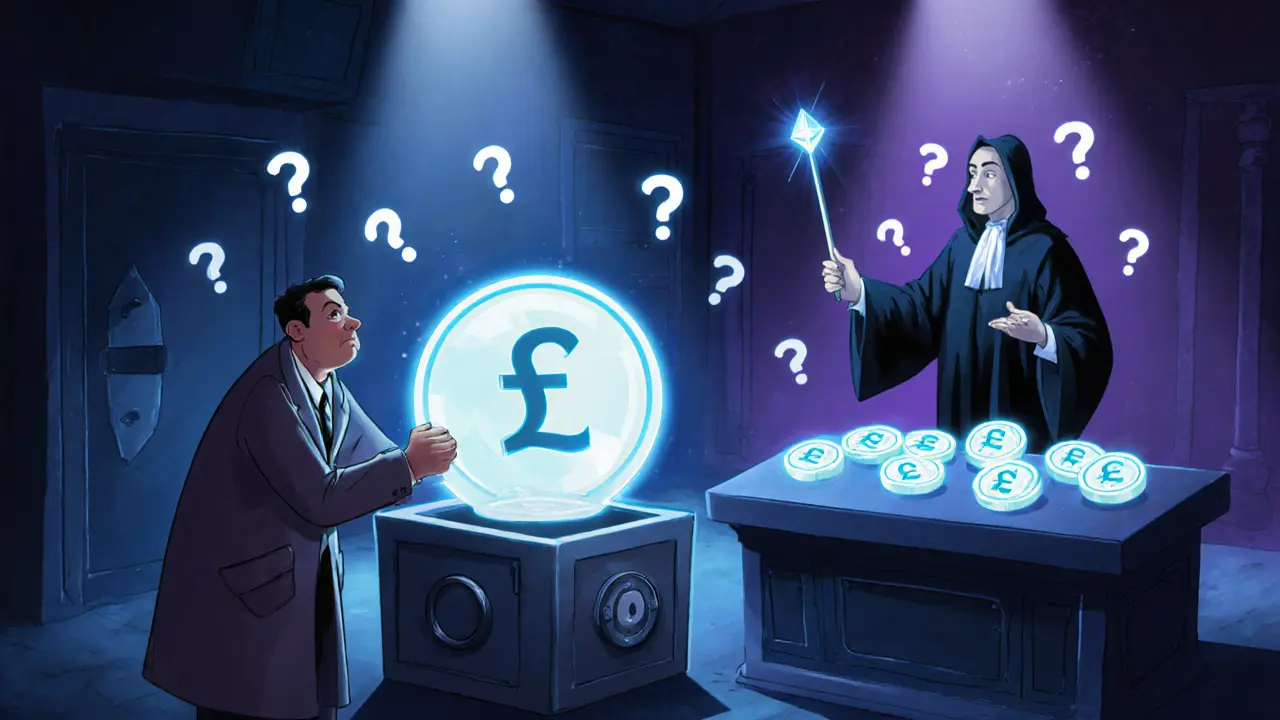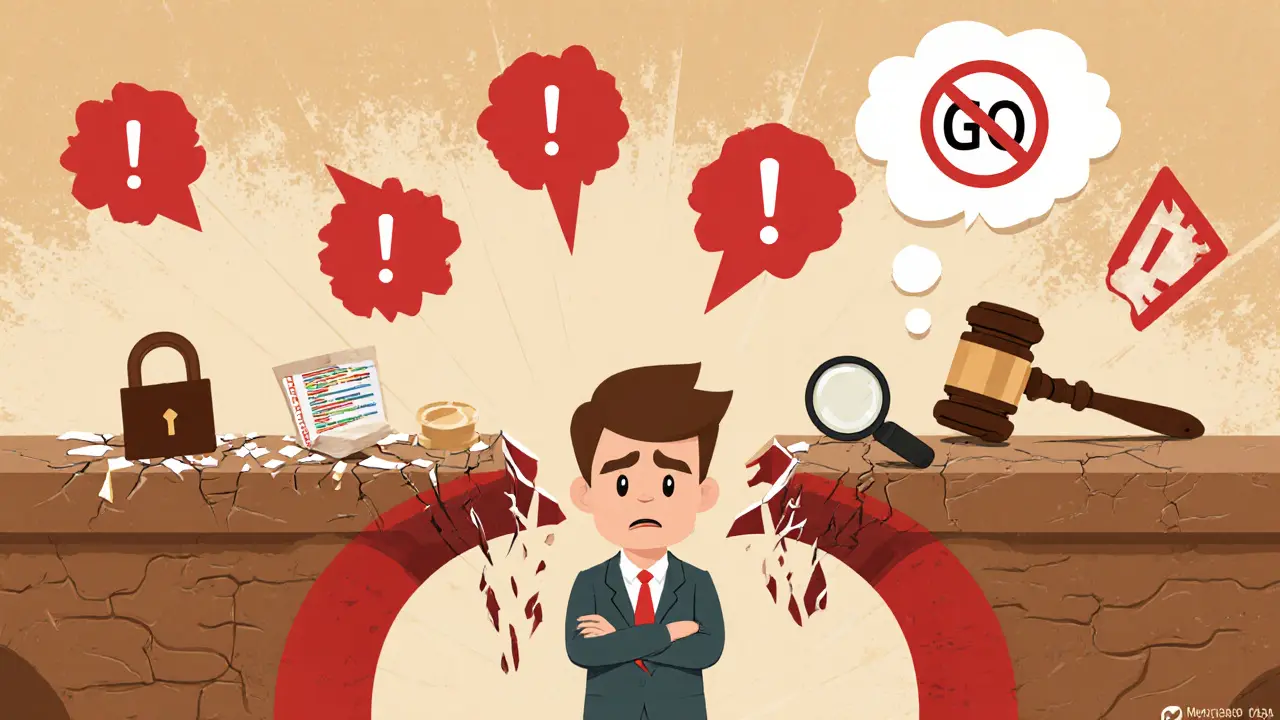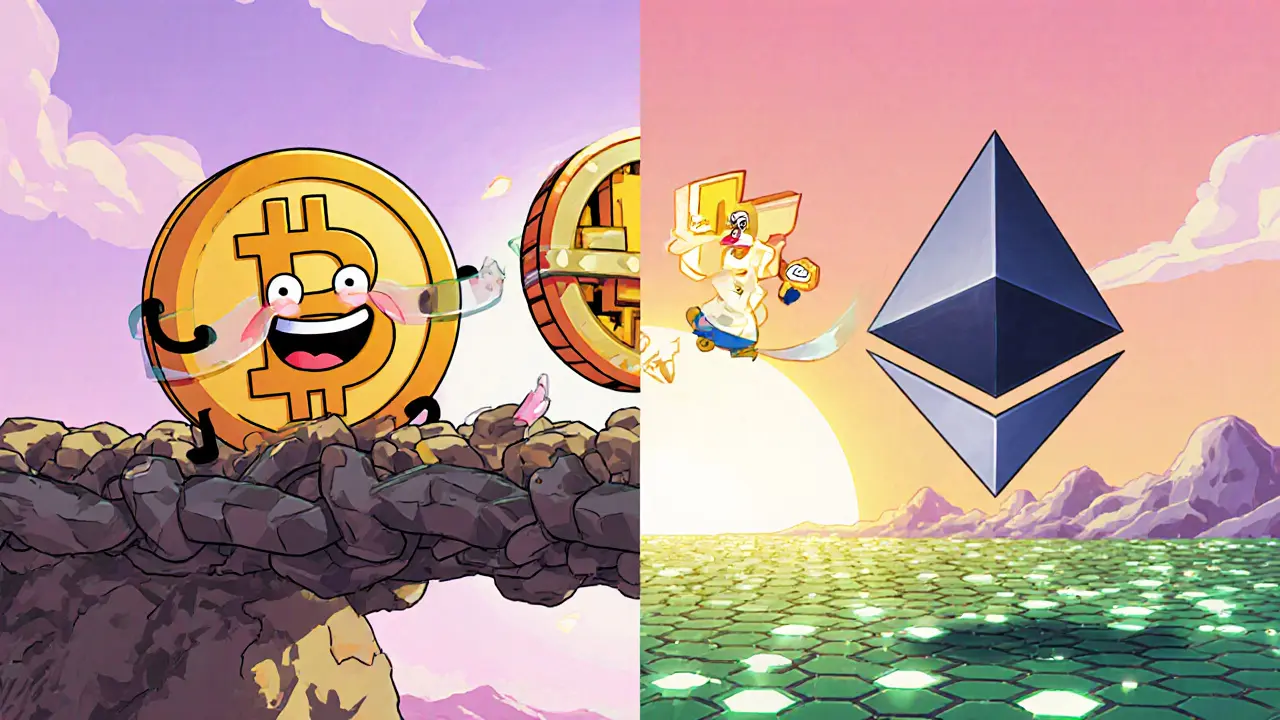Wrapped Token Legitimacy Checker
Verify Your Wrapped Token
Verification Results
You've probably heard the term Wrapped USDR (WUSDR) floating around crypto forums, but the reality is far murkier than a typical coin description. This article breaks down exactly what a wrapped token is, why a "USDR" stablecoin is questionable, and what you should look for before trusting a token that barely exists on any market tracker.
What a Wrapped Token Actually Is
Wrapped token is a digital asset that mirrors the value of another cryptocurrency from a different blockchain. By "wrapping" the original asset, developers create an ERC‑20 (or similar) representation that can move freely on platforms where the native asset cannot operate directly. The process solves the classic interoperability problem: Bitcoin lives on its own chain, but most DeFi protocols run on Ethereum. A wrapped version, like Wrapped Bitcoin (WBTC), lets Bitcoin holders participate in Ethereum‑based pools without actually moving the Bitcoin off‑chain.
The Mystery Behind USDR
Before we can imagine a wrapped version, we need to understand the underlying asset. USDR stablecoin is not a recognized stablecoin in any major market data source as of 2025. The dominant players remain USDT, USDC, DAI, and BUSD. USDR occasionally appears as a typo or a speculative concept, but there is no transparent issuer, reserve audit, or trading pair on reputable exchanges.
Hypothetical Wrapped USDR (WUSDR)
If a USDR stablecoin existed, a Wrapped USDR (WUSDR) would follow the usual pattern: a custodian locks the native USDR on its home chain, then mints an equivalent amount of WUSDR on a target blockchain, typically Ethereum, as an ERC‑20 token. The peg would be 1:1, assuming the underlying reserves are fully collateralized and regularly audited. Because no such token appears on CoinGecko, CoinMarketCap, or any blockchain explorer, WUSDR remains, for now, a theoretical construct.
How Wrapped Tokens Are Created
The creation flow involves three key players:
- Merchant initiates the conversion by sending the original asset to a trusted address.
- Custodian holds the locked asset in a secure vault or smart contract.
- DAO (or a governing body) mints the wrapped version on the destination chain and tracks the total supply.
When a user wants to redeem, the wrapped token is burned, and the custodian releases the underlying asset back to the original owner. This 1:1 backing is the cornerstone of trust for any wrapped token.
Technical Backbone: ERC‑20 and Beyond
Most wrapped assets on Ethereum adhere to the ERC‑20 standard, meaning they inherit functions like transfer(), approve(), and allowance(). This compatibility lets wallets, DEXs, and lending protocols treat the wrapped token exactly like any native token. On non‑Ethereum chains, similar standards exist (e.g., BEP‑20 on Binance Smart Chain, FA2 on Tezos). The token's smart contract also includes a redeem() method that triggers the burn‑and‑release cycle.
Comparison with Established Wrapped Tokens
| Token | Underlying Asset | Primary Blockchain | Market Cap (USD) | Adoption Level |
|---|---|---|---|---|
| WBTC | Bitcoin | Ethereum (ERC‑20) | $10.2 B | High - integrated in most DeFi protocols |
| WETH | Ether | Ethereum (ERC‑20) | $5.8 B | Very high - core to ETH ecosystem |
| WUSDT | USDT (Tether) | Tezos (FA2) & Ethereum | ~$120 M | Low - niche cross‑chain bridge |
| WUSDR | USDR (hypothetical) | - (no public deployment) | - | None - no listings or explorer data |
The table highlights that established wrapped tokens carry massive liquidity and ecosystem support, while a token like WUSDR currently has zero market presence. This gap is the biggest red flag for investors.

Risks Specific to Wrapped Tokens
Even when a token is widely used, wrapped assets carry three core risks:
- Custodial risk: If the custodian mishandles the reserve, the peg can break. Centralized custodians have historically been targets of hacks.
- Smart‑contract vulnerability: The mint/burn contract could contain bugs, allowing malicious actors to mint extra tokens.
- Regulatory uncertainty: Some jurisdictions treat the wrapped token as a derivative, which may affect its legal status.
For a token that lacks any public audit-like WUSDR-these risks are amplified.
Why WUSDR Doesn't Appear on Market Trackers
Searches across CoinGecko, CoinMarketCap, and major block explorers return zero results for "WUSDR." The most plausible explanations are:
- It was a proposal that never left the white‑paper stage.
- It is a typo for "WUSDT," which does exist as a niche bridge token.
- It is a private, permissioned token used by a single organization, never meant for public trading.
Without a transparent issuer, audited reserves, or open‑source contracts, the token cannot gain trust.
How to Verify a Wrapped Token's Legitimacy
If you encounter a new wrapped token, run through this checklist:
- Check the smart contract address on a block explorer (Etherscan, BscScan, etc.).
- Look for a public audit report from a reputable firm (Consensys Diligence, Trail of Bits).
- Confirm the custodian's identity and whether they provide regular reserve attestations.
- Search for community discussion on Reddit, Discord, or Telegram; lack of chatter is a warning sign.
- Ensure the token is listed on at least one reputable exchange or DEX with transparent liquidity.
Failure on any of these points suggests a high‑risk asset.
Quick Decision Cheat‑Sheet for Investors
| Does the token have a verified contract? | Yes → Check custodian audits. No → Avoid. |
| Is the underlying asset a recognized, audited stablecoin? | Yes → Proceed with caution. No → High risk. |
| Is there active community and market depth? | Yes → Lower risk. No → Consider alternatives. |
Applying this matrix to WUSDR will instantly flag it as a “no‑go” due to missing contract verification and zero community presence.
Conclusion: Should You Care About WUSDR?
In short, unless you discover a credible white‑paper, audited smart contract, and a transparent custodian, Wrapped USDR (WUSDR) remains a speculative idea rather than a functional crypto asset. Focus your attention on proven wrapped tokens like WBTC or WETH if you need cross‑chain liquidity, and treat any claim about WUSDR with the same skepticism you would apply to an unlisted ICO.

What is the difference between a wrapped token and a regular token?
A wrapped token mirrors the value of an asset that lives on a different blockchain, while a regular token is native to the chain it runs on. Wrapping adds a lock‑and‑mint layer that enables cross‑chain use.
Why can't I find WUSDR on CoinMarketCap?
No verified contract, exchange listing, or market data exists for WUSDR. It appears to be either a concept that never launched or a simple typo for WUSDT.
Are wrapped tokens safe to use in DeFi?
Safety depends on the custodian's reputation, the smart‑contract audit quality, and market liquidity. Well‑audited tokens like WBTC are generally deemed safe, but every wrapped asset adds a layer of counter‑party risk.
How does the minting process work for a wrapped token?
The user sends the original asset to a custodian address. The custodian then locks it and the governing DAO mints an equal amount of the wrapped token on the target chain. Redemption reverses the process.
Can I create my own wrapped token?
Technically yes. You need a secure custody solution, a smart‑contract that enforces a 1:1 peg, and a community willing to trust your reserve. Most developers use existing bridge frameworks instead of building from scratch.

18 Comments
Norman Woo
wusdr? lol i swear this is just another fomo pump by some guy in a discord server with a canva logo. if it was real, coinmarketcap wouldnt be silent. they dont just forget big coins. this smells like a rug pull waiting to happen. 🤡
Serena Dean
Great breakdown! Really appreciate how you laid out the risks and the checklist. For anyone new to wrapped tokens, this is the exact kind of guide you need before clicking 'approve' on any weird contract. WUSDR? Zero footprint = zero trust. Stick to WBTC or WETH if you want to play safe.
James Young
This post is literally the textbook answer to every crypto scam newbie falls for. You don't just 'hear about a token' and go all in. You check the contract. You check the audits. You check the liquidity. WUSDR doesn't even have a ghost of a paper trail. If you're still asking what it is, you're already one click away from losing your ETH to a honeypot.
Chloe Jobson
Exactly. The ERC-20 compatibility layer is what makes wrapped tokens useful-but only if the underlying asset is real. USDR? Not even a whisper on DeFiLlama. WUSDR? Just noise. Always verify the custodian. Always. No exceptions.
Andrew Morgan
man i just saw someone on twitter selling wusdr as 'the next usdt' and i swear i thought i was back in 2021. the audacity. the same people who lost money on terra are now trying to sell you fake stablecoins with no reserve proofs. just... stop. take a walk. breathe. dont touch this
Michael Folorunsho
This is why American crypto education is a joke. In Europe or Asia, people would’ve dug deeper before even typing the word. WUSDR? It doesn’t exist because no serious entity would risk their reputation on a non-audited, non-existent stablecoin. This is amateur hour. And the fact that people still fall for it? Pathetic.
Roxanne Maxwell
I feel you, Norman. I almost clicked on a WUSDR link last week thinking it was a typo for WUSDT. Thank god I checked Etherscan first. Zero contract. Zero supply. Zero nothing. It’s wild how easy it is to get fooled when you’re tired or excited.
Jonathan Tanguay
Okay so let me explain this to the people who still think wrapped tokens are magic. A wrapped token is NOT a new coin. It's a proxy. It's like renting a house that belongs to someone else. If the landlord disappears, you're locked out. USDR? There's no landlord. No deed. No property records. So WUSDR is like renting a house that doesn't exist. You pay rent to a ghost. And then you wonder why you lost your money. Also, if you're using WUSDR, you're probably using a bridge that's been flagged by Chainalysis. Just saying.
Ayanda Ndoni
yo i just checked coinmarketcap again and still nothing on wusdr. i mean, is this some kind of joke? why are we even talking about this? i got better stuff to do than chase shadows. anyone got a good meme coin instead?
Elliott Algarin
It’s interesting how we project legitimacy onto things that lack any foundation. We want to believe in the next big thing, so we invent it. WUSDR isn’t a token-it’s a mirror. It reflects our hunger for novelty, not any real innovation. Maybe the real question isn’t ‘what is WUSDR?’ but ‘why do we keep believing in ghosts?'
John Murphy
i checked etherscan for wusdr just now. nothing. no contract. no transfers. no decimals. just a blank page. kinda sad really. people are gonna lose money on this. i hope they read this post before they send anything
Zach Crandall
I must emphasize the gravity of this situation. The absence of verifiable on-chain data for WUSDR constitutes a critical failure of due diligence among retail participants. One cannot engage in financial instruments without transparent provenance. This is not speculation; it is negligence.
Akinyemi Akindele Winner
WUSDR? More like WUSSYDR. This ain't crypto, this is a ghost story told by guys who think 'decentralized' means 'I didn't write the code so it's safe'. If you're still chasing this, you probably think NFTs are digital baseball cards. Go touch grass. Or better yet, go touch WBTC. At least that one has a pulse.
Patrick De Leon
The fact that this thread even exists shows how far the crypto industry has fallen. In Ireland, we’d call this a 'bogus instrument'. No audit. No issuer. No exchange listing. Zero liquidity. You're not investing. You're gambling on a hallucination. Don't blame the market. Blame yourself for not doing your homework.
MANGESH NEEL
Ive seen this before. Same script. Same fake whitepaper. Same fake Twitter account. Same Telegram group with 3 bots and 2 real people. This is a pump. And the dumbest part? People are STILL falling for it. You think you're smart because you 'found' it first? Nah. You're just the last one holding the bag when it all evaporates. I told my cousin not to touch it. He didn't listen. Now he's crying in DMs. Don't be him.
Sean Huang
WUSDR is not a token. It is a test. A psychological experiment by the deep state to see how many people will blindly trust a symbol with no substance. They know we crave legitimacy. So they give us a name. A logo. A fake website. And then... silence. The real asset? Your trust. And they are harvesting it. 🕵️♂️
Ray Dalton
If you're reading this and thinking 'maybe it's just new', just pause. Look at the table. WBTC has $10B. WUSDR has $0. That's not a startup. That's a ghost. Take a breath. Check the contract. If it's not on Etherscan, it's not real. You got this.
Peter Brask
bro i swear i saw a youtube ad for wusdr last night. 'invest now before it hits coinbase!' lol. i screenshot it. it looked like it was made in canva by a 14 year old. and guess what? the website had a .xyz domain. and the whitepaper was 2 paragraphs and a stock photo of a globe. i reported it. you should too. this is why crypto gets a bad name. 😤